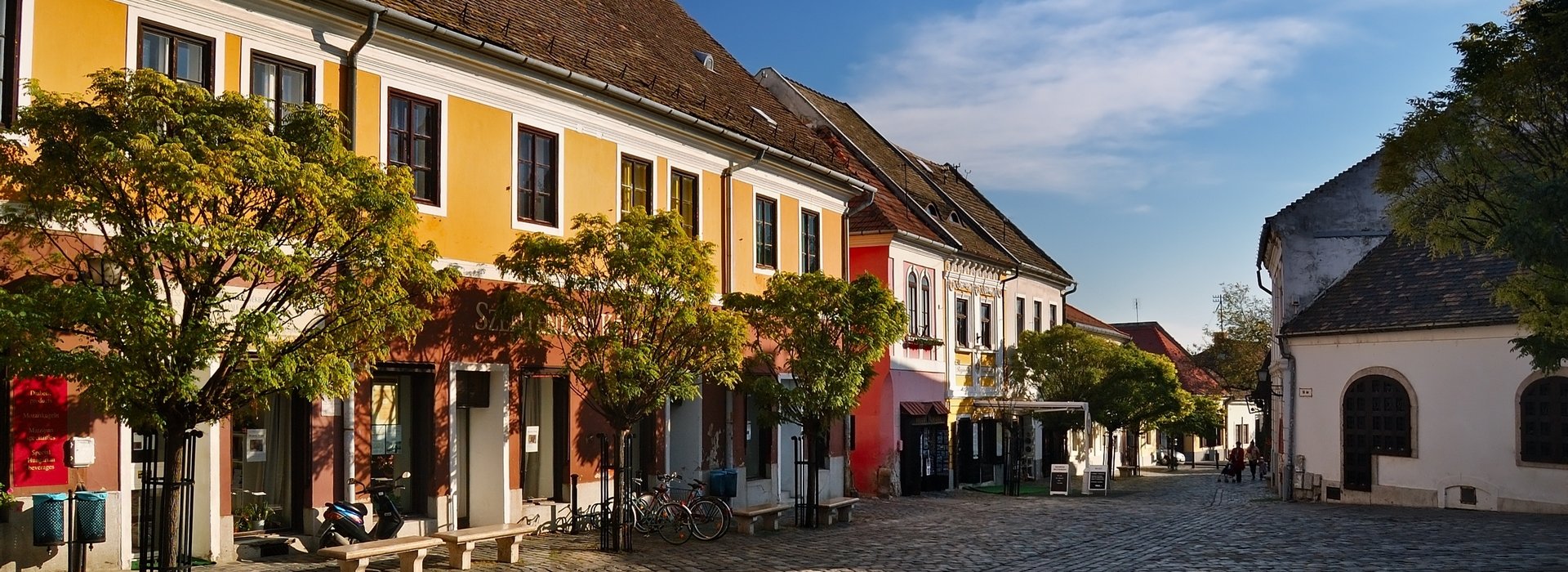

Like most towns along the Danube Bend, Szentendre was home first to the Celts and then the Romans, who built an important border fortress here called Wolf's Castle (Ulcisia Castra). The Magyars arrived late in the 9th century and established a colony here and by the 14th century Szentendre was a prosperous estate under the supervision of the royal castle at Visegrád.
It was about this time that the first wave of Serbian Orthodox Christians came from the south in advance of the Turks, but the Turkish occupation of Hungary over the ensuing centuries brought the town's peaceful co- existence to an end, and by the end of the 17th century the town was deserted. Though Hungary was liberated from the Ottomans soon afterwards, fighting continued in the Balkans and a second wave of Serbs, together with Greeks, Dalmatians and others, fled to Szentendre. Believing they would return home, but enjoying complete religious freedom under the relatively benevolent rule of the Habsburgs (a right denied Hungary's Protestants at the time), half a dozen Orthodox clans each built their own churches and gave the town its unique Balkan feel.
Szentendre's delightful location began to attract day-trippers and painters from Budapest early last century; an artists' colony was established here in the 1920s. The town has been known for its art and artists ever since.
Szentendere was part of the limes the Eastern frontier of the Roman Empire under the name Ulcisia Castra from the 2nd centuty AD.
The Mongols in the 13th century than the Turks in the 15-16th century destroyed the town. It was rebuilt in Baroque style in the 17th century and has preserved the townscape since than. After the Turks left mainly Serbian refugees settled down than Hungarians, Slovaks, Germans, Greeks and Romanians. Each ethnic group had establsihed its own town part adding a versatility to the townscape.
Szentendre boasts a well-preserved 18th century Baroque townscape. Start you exploration from the Main Square (Fő tér) where the Baroque cross was erected in 1763 to commemorate the lucky fact that plague avoided the town.
Winding streets lead off from the Main Square packed with architectural masterpieces, museums, restaurants, cafes and souvenir shops.
Old but well-kept merchant houses encircle Main Square like the block on the eastern side of the square (2-5. Fő tér) that was rebuilt under the same roof after a fire.
On the ground floor the Szentendre Gallery provide exhibition opprotunites for artsists working in the town.
Out of the 9 churches of Szentendre the Baroque-Rococo Greek-Orthodox Blagovestenska church is the best known, built in the mid 18th century by settlers living in the Greek quarter next to the church.
Above its wooden gate frescoes of St Helene and St Constantine greet you while inside you can admire the remarkable iconostase. The church is open daily during the tourist season.
The House of Prisoner Ráby (Rab Ráby Ház) stands on the Rab Ráby Square a centre of the former Dalmatian quarter.
The Austrian Emperor sent Mátyás Ráby to look into local corruption issues. He lived in this modest Baroque house built in 1768. He found out tax evasions and other unlawful acts commited by the local noble men who tried to bribe Ráby. After refuring bribery he was imprisoned. The famous Hungarian writer, Mór Jókai wrote an epic about his story.
Stroll down Görög utca form Main Square lined with apartments of Greek families and you'll reach the peaceful promenade on the the Danube bank.